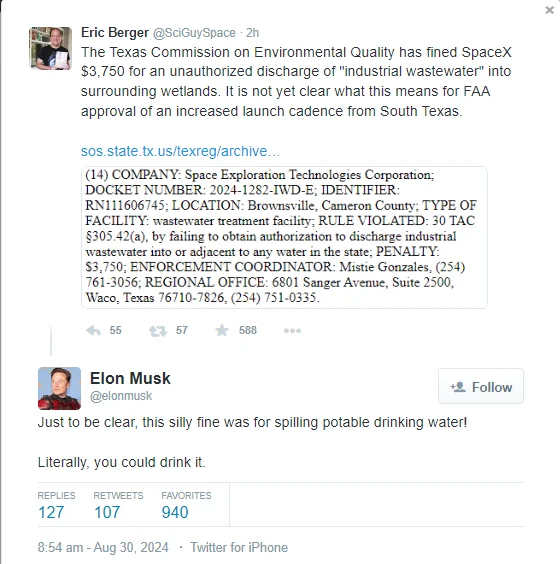the_dunk_tank
It's the dunk tank.
This is where you come to post big-brained hot takes by chuds, libs, or even fellow leftists, and tear them to itty-bitty pieces with precision dunkstrikes.
Rule 1: All posts must include links to the subject matter, and no identifying information should be redacted.
Rule 2: If your source is a reactionary website, please use archive.is instead of linking directly.
Rule 3: No sectarianism.
Rule 4: TERF/SWERFs Not Welcome
Rule 5: No ableism of any kind (that includes stuff like libt*rd)
Rule 6: Do not post fellow hexbears.
Rule 7: Do not individually target other instances' admins or moderators.
Rule 8: The subject of a post cannot be low hanging fruit, that is comments/posts made by a private person that have low amount of upvotes/likes/views. Comments/Posts made on other instances that are accessible from hexbear are an exception to this. Posts that do not meet this requirement can be posted to !shitreactionariessay@lemmygrad.ml
Rule 9: if you post ironic rage bait im going to make a personal visit to your house to make sure you never make this mistake again
view the rest of the comments




I deal with exactly this kind of thing on a daily basis. Even if musk is telling the truth, which he likely isn't because he's a nazi enabling billionaire freak, he is wrong. Read on dear hexbears, if you would like to learn about water quality criteria and what it means for water to be potable.
Potable water is generated by taking raw water from the environment, treating it to remove contaminants/pathogens, and disinfecting it. Raw water needs to be clean enough that it can be cleaned up to drink. Clean enough means limited amounts of shit that can cause human harm (for example, heavy metals like arsenic or mercury) or taste weird (like elevated levels of sulphate) or be weirdly coloured (like high levels of organic tannins). All of the above are examples of contaminants that typical potable water treatment systems do not remove. Potable water treatment systems remove things like turbidity/sediment, some oil and grease, pathogens (bacteria). Once water has had this junk removed, it is only potable for a little while. If you leave a non-chlorinated glass of water out, it'll start growing bacteria almost immediately, some of which can make people sick. As such, municipal water treatment also involves adding chlorine in sufficient amounts to leave a small amount of residual chlorine. Adding some chlorine kills bacteria that are already in the raw water, and the residual chlorine prevents them from growing back while water is traveling through pipes from the treatment plant to your home.
So, chlorine is a disinfectant. It kills bacteria and pathogens. Residual chlorine is in potable water. As a disinfectant, chlorine kills all kinds of other stuff too - pretty much all life is damaged by it, including the life that lives in wetlands (fish, amphibians, invertebrates etc.). Industrial wastewater that has been treated for discharge to the environment should never have chlorine in it. Potable water always has chlorine in it. Water quality guidelines vary by jurisdiction, but probably the level of chlorine in this potable water was 50-100 times higher than what is acceptable in an aquatic environment. The potable water discharged to this wetland was probably acutely toxic to aquatic life there (acutely toxic meaning it kills critters within a day or so of exposure).
So chlorine alone could have warranted this fine. However, drinking water is not the most stringent guideline for water uses. Humans are actually fairly tolerant of junk in drinking water compared to other forms of life. Amphibians for example are much more sensitive to contaminants in water than humans. As home to amphibians and other sensitive organisms, discharge to wetlands can require better quality water than standard drinking water quality.
Also I will post ppb at anyone who smugposts at me about chloramine
It fucking sucks that you have a clearly better grasp on water potability concepts than ever did or ever will, but if you were anywhere near him and on his payroll, he'd throw a tantrum and fire you on the spot.
ever did or ever will, but if you were anywhere near him and on his payroll, he'd throw a tantrum and fire you on the spot.
If it makes you feel better, the majority of my job is being adversarial to industrial water users and owning them with facts and logic
I recently did drawings for a water filtration system for a sterile water supply for a hospital and its... Big (though not as big as I thought).
Currently thinking about my own water storage for camping
I don't have much of a camp system myself. I haven't been out backcountry for a while, not since my child was born. I used to have a little ceramic filter hand pump system that screwed onto a nalgene bottle. It was great. I also had one of those battery powered chlorine generator things that is the size of a thick pen. It was fine but not good for water that had any turbidity, as that required filtering first anyway.
I'm probably bringing city water for the most part, and will have excess electricity most of the time (I'm making a mobile solar powered workshop out of an old caravan), so I was thinking of installing a UV emitter in the tanks with just some light particulate filters if it ever does come to using local water (will still be careful, filter, boil, filter into storage).
What about chloramine? Seems like you don't really understand it.
Not to mention, water that is perfectly fine chemically and biologically can still kill fish and amphibians if it is too warm. Many aquatic animals have very narrow thermal tolerances.